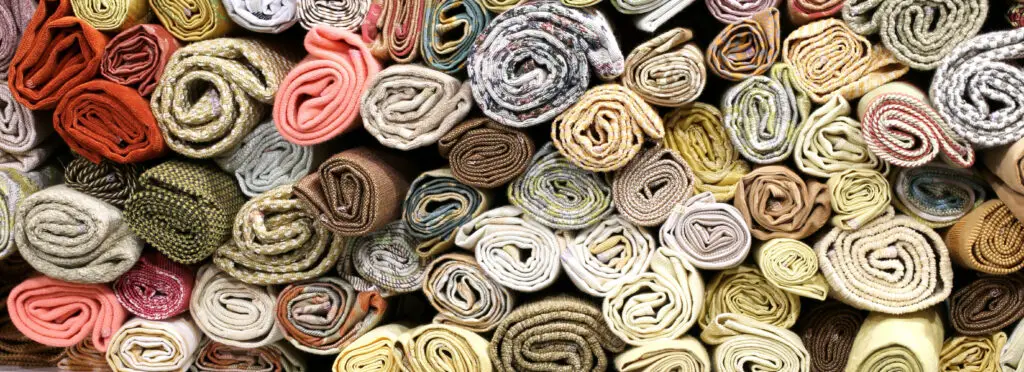
The key to a successful sewing project starts with the fabric. You have to get it right, and it’s not as easy as it sounds. There are lots of things to keep in mind. Here are some pointers that should guarantee success.
What will the fabric be used for?
The first thing to consider is the purpose of the fabric. What is it going to be? A blouse? A cushion? It sounds simple, but it’s worth remembering that material made for home furnishings are different to the fabric made for clothing.
It’s all about the fabric weight – fabrics come in many weights, and this decides how they drape and fall. It’s important to check this before you make the purchase. Although you may love the fabric pattern in the home decor section, it won’t work for a garment!
If it’s clothes you are making, certain fabrics can help you along the way. If you want a wrinkle free and washable fabric, look out for items with spandex, gabardine orLycra in them. These are the key ingredients that will ensure a good fit and will be low maintenance to look after.
If you are designing items for the summer season, stay well away from the wools. Keep everything lightweight and opt for cottons, chiffons and georgette fabrics. These flow nicely and can be worked into delicate shapes. Keep the purpose in mind and you can’t go wrong!
How much will the fabric cost?
Fabric comes at a price and sometimes the cost can surprise you. Cotton is a basic item but there are varying standards in the type of cotton available. You can pay up to £4 a yard for the finest variety from a top haberdashery store so be warned!
If this is a practice project, there is no need to go all out and get the designer fabric. A scrap piece or a basic bit of cotton will do the trick. That way you can save the cash and splash out for the real deal!
Fabric 101
As well as thinking about the purpose of the fabric and its the cost, its good to go that little bit further and learn some general rules.
Width – fabrics are not produced in a uniform width. The general rule is about 45 inches or 55 inches wide but don’t count on this. Manufacturers sometimes work to different measurements and fabrics like silk are often narrower.
Grain – if you don’t pay attention to what you are buying in the shop, you may find that you have just got yourself a wonky piece of fabric! This is due to the grain – a piece of fabric that is off grain can never be returned to a straight and symmetrical grain so be warned. The only way round this is to lay it out and check that the threads sit at a right angle.
Colour – check the fabric roll before you buy. Colours are not always pigmented all the way through the roll and you don’t want to get an inconsistently coloured piece of fabric on your hands. Also make sure that you are looking at the fabric in direct sunlight. Overhead lights may cast a different glow and distort your impression of the colour to move to that window and have a closer look.
Recap
We could talk about fabric all day. There are lots of factors to consider – everything from the weight, colour and price should be kept in mind.
